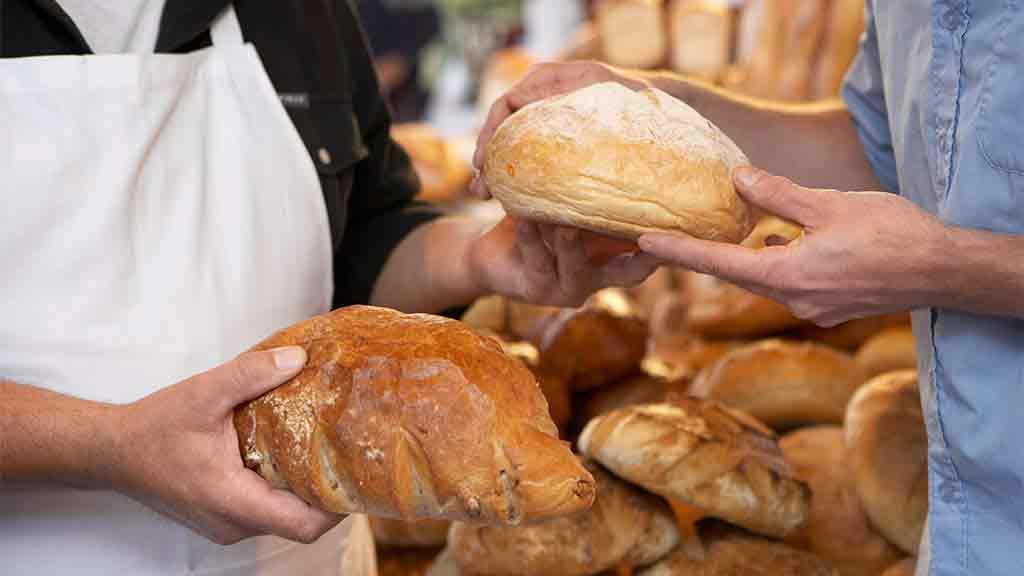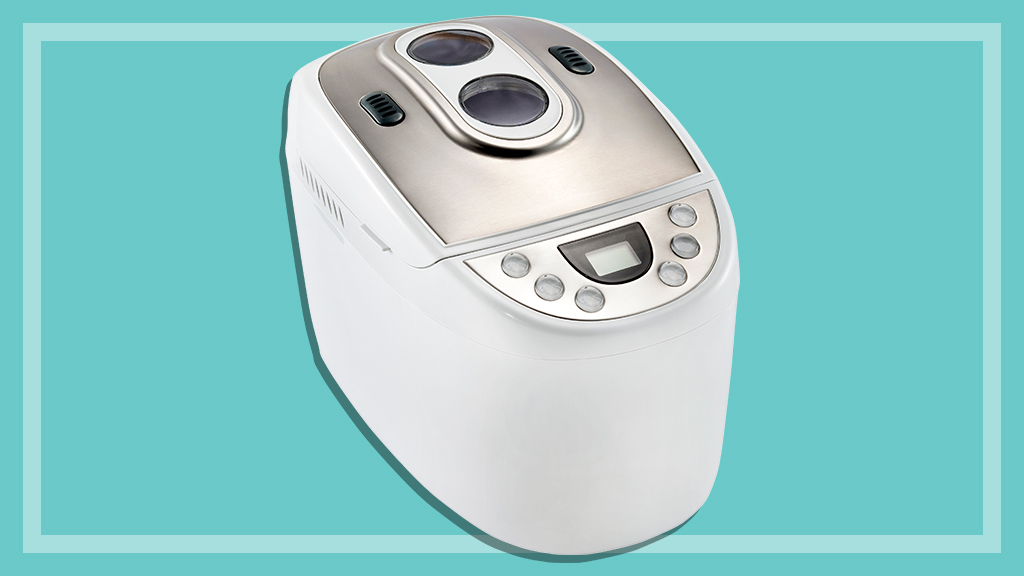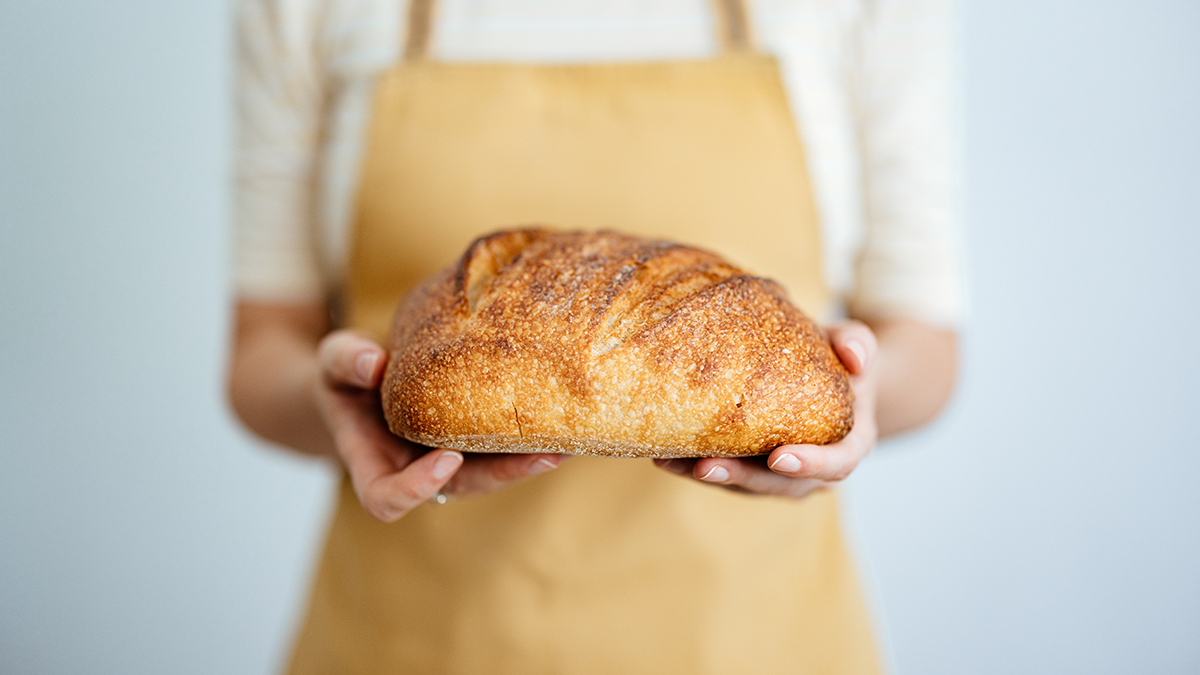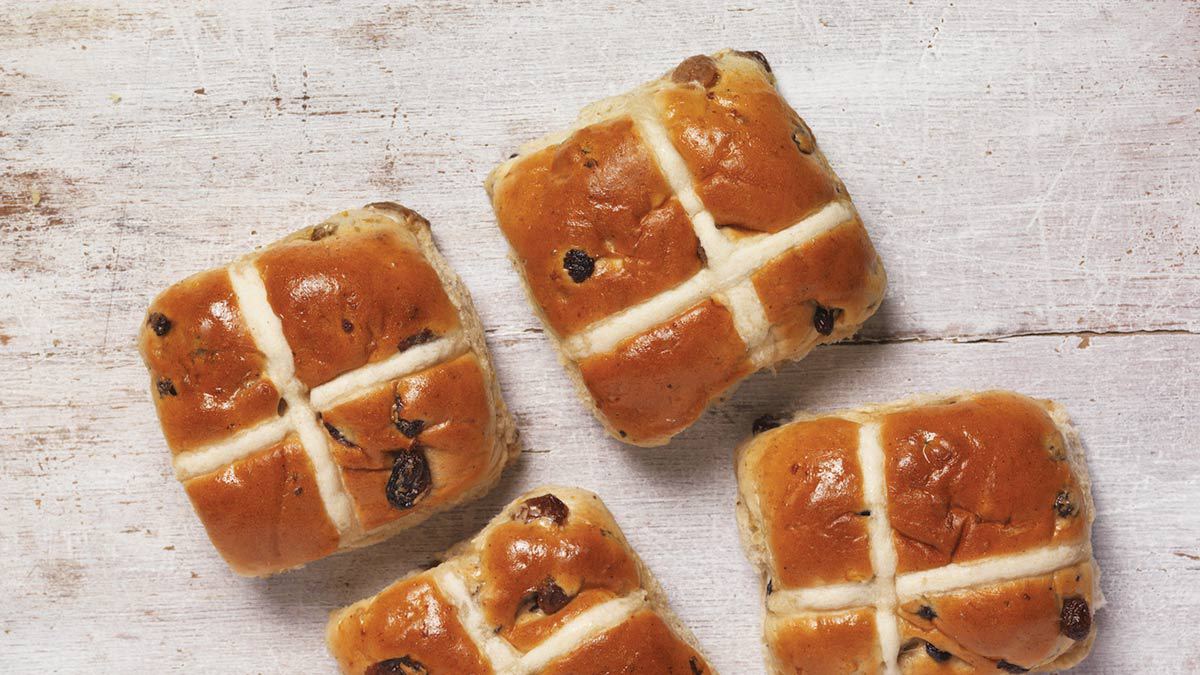Get our independent lab tests, expert reviews and honest advice.
Supermarket and bakery bread

Once upon a time, bread was made with flour, water, salt and yeast and took between eight and 20 hours to produce.
On this page:
- Bread ingredients: What's in your bread?
- Preservatives in bread
- How harmful are additives like 282?
- Shelf life without preservatives
- Labelling and health concerns
- Special claims
- Who owns your bread?
In the early 20th century, bakers experimented with various mechanised techniques to speed up bread-making, but in 1961 the Chorleywood bread process changed everything.
Invented by UK scientists, the Chorleywood method allows a loaf to go from flour to sliced and packaged in about three-and-a-half hours using high-speed mixers and the addition of extra yeast and dough-improving chemicals.
Now bread that is soft, springy and consistent takes much less time and costs much less to produce.
But is big-batch bread, with its additives and preservatives and long shelf life, as healthy as traditional bread? And should you choose sourdough, wholegrain or low GI?
Bread ingredients: What’s in your bread?
Look at the ingredients on a bread label and alongside the more recognisable substances you’ll often see a list of mysterious numbers. Some of these additives are what are known as bread and dough “improvers” or “conditioners”.
They often have more than one function, but generally they’re designed to dramatically increase the rate at which the dough rises (helping breadmakers increase production speeds and lower costs), improve bread texture and taste, and extend shelf life.
Processing ingredients you’ll commonly see are:
- mineral salt 170 (calcium carbonate)
- ascorbic acid (food acid 300 or treatment agent 300), otherwise known as vitamin C
- emulsifiers (427e, 481, 471), vegetable gums (412, 461) and amino acid 920 – these speed up dough handling, help sliced bread retain its shape and extend shelf life by reducing the crystallisation of starch that makes the bread go hard (if you put bread in the fridge, the cold temperature increases the rate of crystallisation and the bread goes hard faster).
Only small amounts of these additives are required – usually up to three percent of the bread – and bakers often buy them in a ready-made premix, to which they add water and yeast.
Most breads, whether from a factory or a small baker, are made from similar premixes – differences generally stem from baking techniques.
Since 2009, it’s been mandatory for breads (except organic ones) to add:
- iodine via iodised salt (for thyroid health)
- folic acid, a form of the B vitamin folate that helps reduce the rate of neural tube defects in infants.
Preservatives in bread
While emulsifiers and other “improvers” are widely accepted as safe, preservatives are more controversial. Introduced in the 1990s as a mould retardant, calcium propionate, or 282, is the best-known preservative of public concern.
Although approved by Food Standards Australia and New Zealand (FSANZ) for use at specified levels, a furore erupted when a study by food additive activist Sue Dengate, published in the Journal of Paediatrics and Child Health in 2002, showed 282 to be associated with irritability, restlessness, inattention and sleep disturbance in children.
In response to consumer concern, most breadmakers removed 282 from many of their breads, although it’s still often used in other products such as crumpets, muffins, Turkish bread and pizza bases. It’s also widely found in wraps.
With 282 a dirty word for concerned consumers, some breadmakers get around the problem by using its close relative, propionic acid (280), instead.
How harmful are additives like 282?
The internet is awash with warnings of the dangers of 282 and other food additives, pointing to a cumulative cocktail in the body which can lead to a host of symptoms from migraine and tiredness to rashes, gastro-intestinal upsets and depression.
Propionates (280–283) are on the list of food additives that can be associated with food intolerance in the Royal Prince Alfred Hospital Elimination Diet. On her Food Intolerance Network website, Dengate argues that children’s behaviour and learning is more affected than authorities will admit, citing stories from parents who noticed a behavioural improvement when 282 was removed from their child’s diet.
But Dr Rob Loblay, director of the allergy unit at Sydney’s RPA Hospital, argues that about five percent of the general population is sensitive to one or more food additives, whether artificial or natural, and considers the push to ban additives “overblown”.
Not all preservatives are artificial or may cause harm, and many are useful for food safety
Vijay Jayasena, professor of food science and technology, Curtin University
“The issue is very complicated,” says Vijay Jayasena, professor of food science and technology at Western Australia’s Curtin University. “The first thing people should know is that not all preservatives are artificial or may cause harm, and many are useful for food safety.”
Jayasena says most people won’t be affected by 282, while for others it’s about dosage. “It’s hard to say at what level 282 may cause a reaction in each individual, because people can have reactions to so many things and at different levels. However, if you’re worried about them you should avoid them.”
Anti-additive campaigners argue that until additives are proved safe, FSANZ should use the precautionary principle where suspect additives are substituted with others that don’t raise health concerns.
If you’re worried about preservatives, Jayasena says breads baked daily in-store generally have few, if any, preservatives, because any bread not sold is usually thrown out at the end of the day. Check the ingredient labels, or ask the baker what preservatives they use.
Shelf life without preservatives
Packaged sliced bread can be 24 hours old by the time it arrives at the shops because it’s baked the day before and then transported.
Consumers will have no idea how old the bread is, because the best-before tag indicates when it should be eaten by, rather than when it was baked.
Bakers we spoke to agree the lifespan of a fresh loaf should be about two or three days. But we found packaged breads last much longer than fresh-baked breads.
So how do packaged bread companies make their bread last mould-free so long without artificial preservatives?
Manufacturers claim advances in processing methods help, as does packaging that limits the flow of moisture, oxygen and carbon dioxide.
Artificial preservatives may also be replaced with natural ones. As an example, mould can be kept at bay by citric acid (330), lactic acid (270) and fumaric acid (297). Other preservatives are vegetable gums, vinegar (acetic acid 260) and sodium.
Labelling and health concerns
Questions have been raised about a loophole in labelling laws that allows manufacturers to avoid listing unpopular ingredients such as 282 or 223. In the Food Standards Code, food processing aids don’t have to be listed as ingredients. According to FSANZ, it’s very unusual for there to be anything other than minimal residues of these processing aids in foods.
As a sulphite, 223 is not permitted for use as a preservative in bread. It is, however, permitted for use as a processing agent – and so it can be used and not listed.
If 282 is used as a preservative, it must be listed, but if the manufacturer deems it a processing aid, it does not. So it’s essentially up to manufacturers to “apply good manufacturing practice”.
Enzymes such as alpha-amylase are also classed as processing aids and so don’t have to be listed. Used in most breads in a dried, powdered form, they artificially help speed up the fermenting process that would normally occur when traditional dough is left to rise.
Concerns have been raised that enzymes are still allergenic, even after baking. Studies have found workers exposed to airborne particles of alpha-amylase can become susceptible to “baker’s asthma”. But FSANZ argues most of the allergenic effect of alpha-amylase is destroyed during cooking, pointing to a World Health Organization/UN Food and Agriculture Organization expert committee which found no adverse effect from seven grams of the enzyme per kilogram of body weight per day.
Special claims
Wholegrain
Pre-2005, wholegrain food was defined by FSANZ as “unmilled products of a single cereal or mixture of cereals”. However, as a result of petitioning from the cereal processing industry, the definition was changed to a food that uses every part of the grain. This means grains can be processed and separated into three constituent parts (bran, germ and endosperm) but a food can still be classified as wholegrain as long as the three parts are added back into the food in the same proportions as the original unmilled grain. Multigrain breads are usually made from white flour with added whole grains.
Sourdough
Sourdough is traditionally made using a “starter”, where wheat and water ferment to create a culture that gives the sour taste. This requires specific temperatures to survive so commercial bakeries often replace it with dried powdered yeast, which adds colour and smell as well as the sour taste but is not considered authentic by connoisseurs. There is no regulation defining sourdough, so the only way to know if it is authentic is to ask the baker.
Source of fibre
As a general rule of thumb, bread with at least 2g of dietary fibre per serve is a “source” of fibre, bread with at least 4g of dietary fibre per serve is a “good source” of fibre, and with at least 7g of dietary fibre per serve is an “excellent source” (Food Standard 1.2.7).
White bread labelled “high fibre” often contains Hi-maize, which is a corn-based, resistant starch that passes undigested into the small intestine, where it can encourage the growth of beneficial bacteria.
There are two main types of fibre: insoluble and soluble. All plant foods – vegetables, fruit, legumes and grains – contain a mixture of fibres, and each type plays an important role in the body.
Insoluble fibre: This is the type of fibre you probably first think of –– it’s important to prevent constipation and associated problems like haemorrhoids. It works by providing bulk to the diet and speeds everything through the bowel. It can also have an influence on the bowel bacteria, which may help prevent bowel cancer.
Soluble fibre: Use of this type of fibre has been linked to preventing heart disease. It’s made up of things like pectin in fruit, and gums in grains and legumes. It can lower cholesterol levels in the body and help with constipation. There’s usually much more insoluble fibre in plant foods than soluble so if you’re after a cholesterol-lowering effect, you need to take care to include high-soluble-fibre foods.
Resistant starch is not fibre, but is thought to act in a similar way to traditional fibre to improve bowel health. Resistant starch is in foods such as unprocessed cereals and grains, firm bananas, lentils, potatoes and especially in starchy foods that have been cooked then cooled (such as cold potatoes or rice). ‘Hi-maize’, added to foods such as some white breads and cereals, is also a type of resistant starch.
How much fibre do you need?
Most people only eat about two thirds of the fibre they need. At least 30 grams a day is the recommended amount for adults. Aim to get it from a variety of foods because each of the different types of fibre is important to different aspects of your overall health.
It’s important that kids get enough fibre and although Australian guidelines don’t specify an exact amount, a good general measure is the child’s age in years plus 5 to 10 grams, per day.
Also, it’s not just the amount that you eat – you should also be aware of the fibre value each type of food will deliver, and don’t be swayed when the box simply says ‘high in fibre’.
Fibre-boosting tips
- Choose wholemeal or wholegrain breads, or try fibre-boosted white breads. Look for ‘high in fibre’ on the label.
- Choose a high-fibre breakfast cereal.
- Use wholemeal flour in cooking and choose wholemeal pasta and brown rice rather than white.
- Choose fresh fruits rather than fruit juices and don’t peel fruit if it’s not necessary.
- Add beans, barley or other whole grains to soups, casseroles and rissoles.
- Don’t rely on plain lettuce-based salads for your fibre. Try using cooked wholegrains (that have been allowed to cool), and include beans or lentils, too. Cold potato has more resistant starch than when it’s first cooked.
Omega-3s
There are two types of omega-3 fats – those from plants (mainly ALA) and those from fish (mainly EPA and DHA). There’s now very good evidence that omega-3 fats from fish reduce your risk of heart disease and probably provide many other health benefits as well. But you don’t get the same benefits from ALA from plant sources, such as linseed. This fat may also help prevent heart disease, but you’d need more of it to get some benefit – more than you’d get from a serving of multigrain bread containing linseed.
Phytoestrogens
Phytoestrogens in some plants, such as soy and linseed, mimic the hormone oestrogen. They supposedly relieve menopause symptoms and protect against heart disease and some cancers, including breast cancer. In reality, there’s no consistent evidence that soy products reduce hot flushes, and no evidence at all that linseed relieves menopausal symptoms. High consumption of soy foods may lower the risk of breast and prostate cancers, but only by a little. For the small amount you’d get from a serving of multigrain bread there’s little point in buying soy and linseed over other grainy breads unless you prefer the taste.
Glycaemic index (GI)
GI is a measure of how carbohydrates affect your blood glucose levels. If there’s a rush of glucose into the bloodstream followed by a quick fall, the food is higher in the GI scale. If it gives a slower, gentler rise and fall in blood glucose, the GI is lower. Diabetics should consider GI, but for other people research hasn’t yet shown significant benefits – although low-GI foods may aid weight control. Manufacturers don’t always make a GI claim on the label, but products with a higher wholegrain content tend to have a lower GI because the grains take longer to digest
Who owns your bread?
The bread industry (like our supermarkets) is dominated by a duopoly. You may see many brands, but at least two-thirds of all our bread comes from two big corporations – George Weston Foods and Goodman Fielder.
George Weston Foods products
- Tip Top
- Abbott’s Village Bakery
- Burgen
- Golden
- Bagel House
- Bazaar
Goodman Fielder products
- Country Life
- Helga’s
- La Famiglia
- Lawson’s
- Mighty Soft
- Molenberg
- Wonder White






